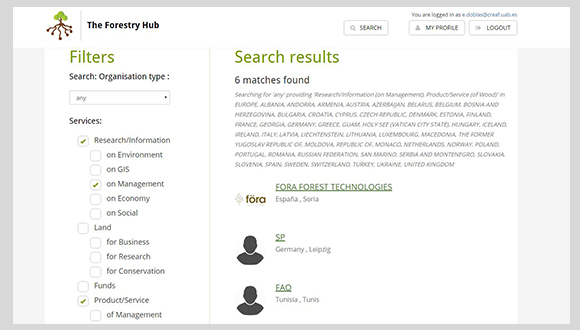The ‘Tinder’ of the forestry and environment sectors
Forestry Hub is a digital tool for getting in touch with actors in the forestry and environment sectors, capable of effectively uniting supply and demand of services for those involved.

CREAF, together with other European centers and institutions, has developed a tool which works similarly to other online platforms used for connecting individuals, but this one is designed to connect professionals and institutions within the professional forestry and environment industries. “The objective of Forestry Hub is to offer a nexus for business opportunities, job offers, as well as research projects or other types of projects. It allows paring of interests, needs, and offers made by businesses, research centers, NGOs, and forest owners, among others,” says the Hub’s scientific coordinator, CREAF researcher Enrique Doblas.
The way it works is simple: when registering on the Hub’s web page (a free service), the user fills in different types information including the organization type, geographic location or area where activities are undertaken (not just the headquarters), and services or products offered – for instance, specific fields of research, type of use of any land under ownership, forest products offered, financial services, certifications, etc. When someone searches for information on the platform, these are kinds of search terms and keywords which can be used to find partners. This way, someone with specific needs or interests can find their ideal collaborator capable of offering what they need.

Built by the MENFRI project and now maintained by the NODE, Forestry Hub was created because the researchers involved discovered that there was a sort of void which made it difficult for different forestry sector actors to find one another. “We’re still in the early stages, but we have high expectations. We want as many people as possible to sign up and share it! The more users, companies and institutions that sign up, the better the results will be for everyone. We also are hoping for a high level of interaction between ourselves and other users so that they can tell us how well it is working and how to improve it,” says Doblas, who also coordinates MENFRI and the NODE.
Later down the road, it is expected that the information generated by searchers and offers will be extractable for the generation of helpful statistics to understand the dynamics of this particular market.
Invitation to participate.






